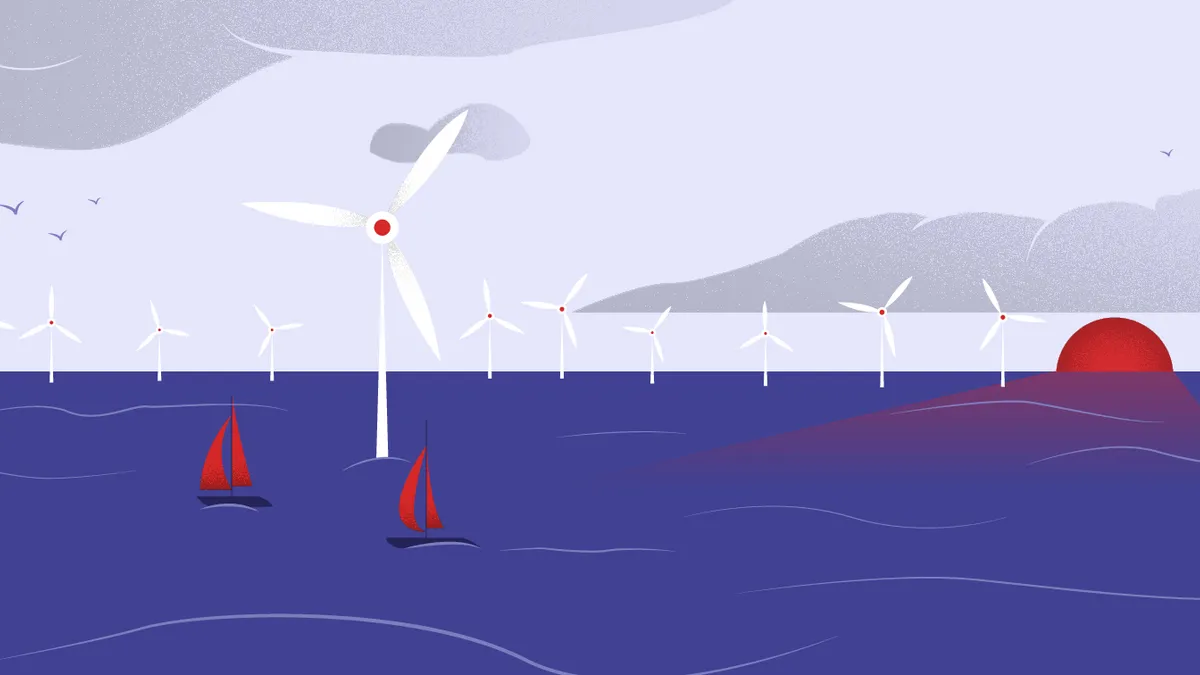Dive Brief:
- The Ohio Power Siting Board on Thursday, after nearly four years of consideration, issued a construction certificate to a Norwegian-backed Cleveland company to build a six-turbine, 20.7 MW demonstration wind farm in Lake Erie at an estimated cost of $126 million.
- OPSB's opinion and order includes a condition that would require the company, Icebreaker Windpower, to feather the wind turbines from dusk to dawn March 1 through November 1 to ensure the safety of migrating birds and bats. Feathering entails a way of manipulating the turbines so they no longer turn in the wind.
- That surprise condition "may well be fatal" to the project, said David Karpinski, president of the Lake Erie Energy Development Corp. (LEEDCo), the non-profit group that partnered with Fred. Olsen Renewables to form Icebreaker Wind Inc. and has been developing the project for a decade.
Dive Insight:
The safety of migratory birds and bats has been a contentious issue during the years the OPSB has considered Icebreaker Wind Power’s application.
LEEDCo chose the site for the wind farm after the Ohio Department of Natural Resources recommended it as an area through which migratory birds and bats do not fly. Nevertheless, OPSB staff initially demanded overnight shutdowns for 10 months of the year.
OPSB staff agreed last year to drop the overnight feathering provision after the company agreed to install sophisticated radar to detect and track birds and bats weighing as little as 10 grams, equip the turbines with ultra-sensitive collision detection equipment, and shut down when more than 21 birds are killed in 24 hours. But opponents have countered that if such equipment exists it must still be tested for accuracy.
LEEDCo at the time argued that overnight shutdowns would make it impossible to attract private investors and proposed the sophisticated radar and collision detection equipment. Members of the siting board made no mention of the overnight feathering provision before Thursday’s unanimous vote to approve the project.
OPSB's decision says the March to November use restriction would be in place "until additional information regarding monitoring is on the record," meaning at some point the board could decide to eliminate mandated overnight feathering.
"Given the novel nature of this project, we believe the more appropriate course is to limit operations during the periods where there is a heightened risk for bird and bat collisions, without waiting for a potential issue with the technology to occur," OPSB said in approving the project.
LEEDCo, in a prepared statement, noted that the project has been reviewed by 13 local, state and federal agencies, including the Ohio EPA, the U.S. Army Corps of Engineers and the U.S. Fish and Wildlife Service.
"We have been fully transparent with the OPSB Staff that this requirement makes the project economically unworkable and unrealistic, and they ultimately agreed and signed on to the Joint Stipulation in May 2019," Karpinski said.
"In light of today's decision, LEEDCo will need to reconvene in the coming days and examine our options on how and whether we can move forward," he added.













